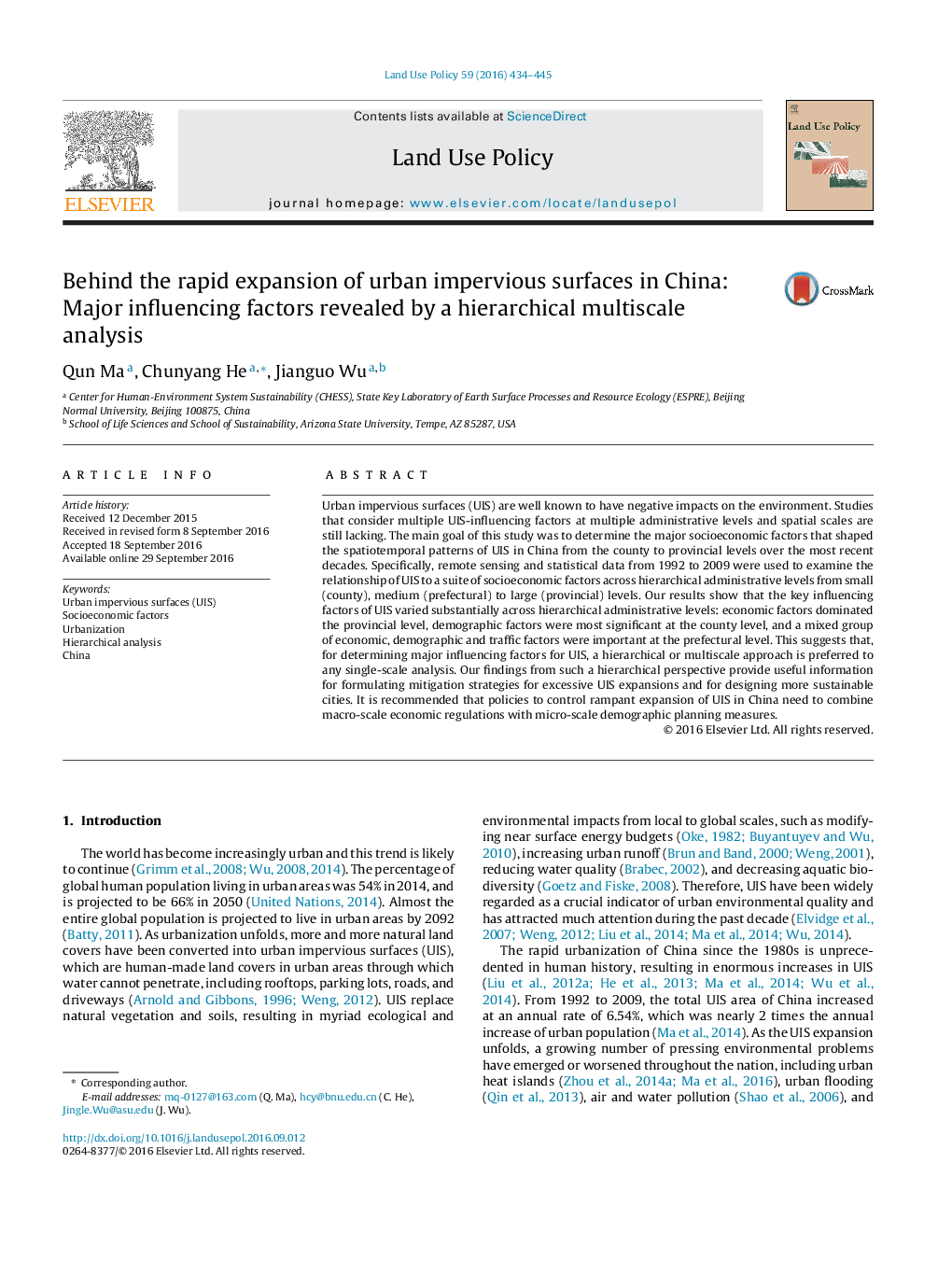| Article ID | Journal | Published Year | Pages | File Type |
|---|---|---|---|---|
| 6461579 | Land Use Policy | 2016 | 12 Pages |
â¢Key drivers of urban impervious surfaces (UIS) in China are scale-dependent.â¢Economic factors are dominant at the provincial level.â¢Economic, demographic, and traffic factors are all important at the prefectural level.â¢Demographic factors are dominant at the county level.â¢A hierarchical multiscale approach is necessary for UIS research and management.
Urban impervious surfaces (UIS) are well known to have negative impacts on the environment. Studies that consider multiple UIS-influencing factors at multiple administrative levels and spatial scales are still lacking. The main goal of this study was to determine the major socioeconomic factors that shaped the spatiotemporal patterns of UIS in China from the county to provincial levels over the most recent decades. Specifically, remote sensing and statistical data from 1992 to 2009 were used to examine the relationship of UIS to a suite of socioeconomic factors across hierarchical administrative levels from small (county), medium (prefectural) to large (provincial) levels. Our results show that the key influencing factors of UIS varied substantially across hierarchical administrative levels: economic factors dominated the provincial level, demographic factors were most significant at the county level, and a mixed group of economic, demographic and traffic factors were important at the prefectural level. This suggests that, for determining major influencing factors for UIS, a hierarchical or multiscale approach is preferred to any single-scale analysis. Our findings from such a hierarchical perspective provide useful information for formulating mitigation strategies for excessive UIS expansions and for designing more sustainable cities. It is recommended that policies to control rampant expansion of UIS in China need to combine macro-scale economic regulations with micro-scale demographic planning measures.
